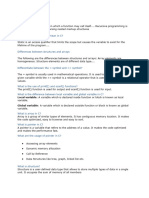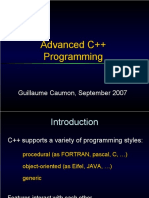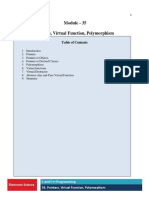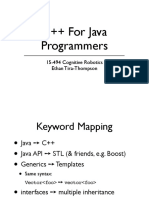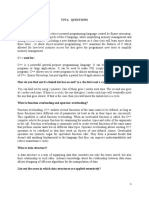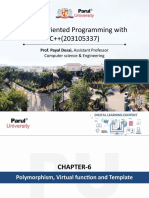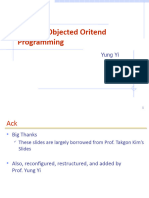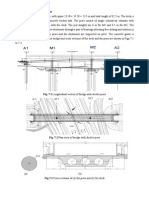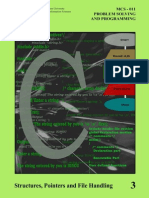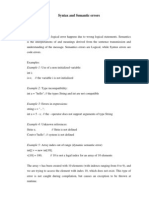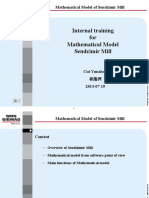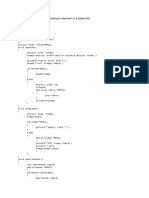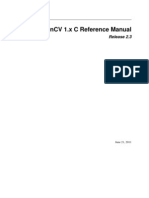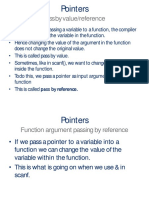From C function pointers to object-oriented
programming
Hayo Thielecke
University of Birmingham
http://www.cs.bham.ac.uk/~hxt
February 2015
�Objects and C
C gives us primitive building blocks
struct, pointers, functions
What we do with them is up to us
How far can we push C?
How about objects? Or something reasonably close?
We will assume: virtual functions as fundamental for OO
Early C++ was a preprocessor for C
Advanced example of pointers in C
Some idea of how C++ is implemented
�The big picture: building objects in C
C ++
build and use vtables manually
C compiler
C++ compiler
machine code
�Simple objects simulated in C
In C++ we can write:
class inCPP {
int x;
public:
int get() { return this->x; }
};
�Simple objects simulated in C
In C++ we can write:
class inCPP {
int x;
public:
int get() { return this->x; }
};
In C we can write:
struct inC {
int y;
int (*cget)(struct inC *thisp);
};
int cf(struct inC *thisp) { return thisp->y; }
�Classes simulated in C
In class-based OO languages (like C++), objects can share their
member functions in a virtual function table, one per class
struct vtbl {
void (*f1)(); // member functions
int (*f2)();
...
};
struct s {
struct vtbl *vptr;
int x;
};
// pointer to shared vtbl
// data members
�Physical subtyping in C example
struct s1 {
struct s1 *p;
int x;
};
struct s2 {
struct s2 *q;
int y;
struct s2 *q2;
};
Code that works on s1 can also work on s2.
In that sense, s2 is a physical subtype of s1.
A limited form of polymorphism in C due to structure layout
�OO in C: two key pointers
In C++ we write a virtual function call as
left->print();
Simulated in C, this becomes:
thisp->left->vptr->print(thisp->left);
Give each function access to object via self or this pointer
Call virtual function indirectly through virtual function table
�Example class in C++
Canonical example of OO:
parse trees for expressions
virtual functions for processing trees
class Expression
{
public :
virtual int eval () = 0;
virtual void print () = 0;
};
�Virtual function table in C: types
structure + pointer + function:
struct vtbl
{
void (* print ) () ;
int (* eval ) () ;
};
Base class has pointer to vtbl:
struct ExpressionOO
{
struct vtbl * vptr ;
};
�Derived class via physical subtyping
struct Constant
{
struct vtbl * vptr ;
int n ;
};
In memory:
ExpressionOO:
Constant:
vptr
vptr
n
Position of vptr is the same.
�Virtual member functions populate the vtable
void printConstant ( struct Constant * thisp )
{
printf ( " % d " , thisp - > n ) ;
}
int evalConstant ( struct Constant * thisp )
{
return thisp - > n ;
}
Global variable for vtable, containing function pointers
struct vtbl vtblConstant =
{
& printConstant ,
& evalConstant
};
�Constructor
malloc and intialize, including vptr
void * makeConstantOO ( int n )
{
struct Constant * p ;
p = malloc ( sizeof ( struct Constant ) ) ;
if ( p == NULL ) exit (1) ;
p->n = n;
p - > vptr = & vtblConstant ;
return p ;
}
�Another derived class, for plus
struct Plus
{
struct vtbl * vptr ;
struct ExpressionOO * left ;
struct ExpressionOO * right ;
};
In memory:
ExpressionOO:
Plus:
vptr
vptr
left
right
�Virtual member functions
void printPlus ( struct Plus * thisp )
{
thisp - > left - > vptr - > print ( thisp - > left ) ;
printf ( " + " ) ;
thisp - > right - > vptr - > print ( thisp - > right ) ;
}
The eval function:
int evalPlus ( struct Plus * thisp )
{
return thisp - > left - > vptr - > eval ( thisp - > left )
+ thisp - > right - > vptr - > eval ( thisp - > right ) ;
}
�Virtual function table for plus
struct vtbl vtblPlus =
{
& printPlus ,
& evalPlus
};
�Constructor for plus
void * makePlusOO ( struct ExpressionOO * left ,
struct ExpressionOO * right )
{
struct Plus * p ;
p = malloc ( sizeof ( struct Plus ) ) ;
if ( p == NULL ) exit (1) ;
p - > vptr = & vtblPlus ;
p - > left = left ;
p - > right = right ;
return p ;
}
�Using it
struct ExpressionOO * p1 , * p2 , * p3 , * p4 , * p5 ,
* p6 , * p7 ;
p1
p2
p3
p4
=
=
=
=
makeConstantOO (1) ;
makeConstantOO (2) ;
makeConstantOO (3) ;
makeConstantOO (4) ;
p5 = makePlusOO ( p1 , p2 ) ;
p6 = makePlusOO ( p3 , p4 ) ;
p7 = makePlusOO ( p5 , p6 ) ;
printf ( " \ nTesting print 1 + 2 + 3 + 4\ n " ) ;
p7 - > vptr - > print ( p7 ) ;
�OO in C: two key pointers
In C++ we write a virtual function call as
left->print();
Simulated in C, this becomes:
thisp->left->vptr->print(thisp->left);
Give each function access to object via self or this pointer
Call virtual function indirectly through virtual function table
�How big are objects in C++
class A {
void fA () { }
int * a ;
};
class B {
virtual void fB () {}
int * b ;
};
class C {
virtual void fC1 () {}
virtual void fC2 () {}
int * c ;
};
�How big are objects in C++
class A {
void fA () { }
int * a ;
};
class B {
virtual void fB () {}
int * b ;
};
class C {
virtual void fC1 () {}
virtual void fC2 () {}
int * c ;
};
sizeof(A) = 8, sizeof(B) = 16, sizeof(C)= 16 on typical compiler
�Inheritance puzzle
class base {
public :
int x = 1;
virtual int f () { return x + g () ; }
virtual int g () { return 10; }
};
class derived : public base {
public :
int x = 100;
virtual int g () { return x ; }
};
What is (new derived())->f()
�Inheritance puzzle
class base {
public :
int x = 1;
virtual int f () { return x + g () ; }
virtual int g () { return 10; }
};
class derived : public base {
public :
int x = 100;
virtual int g () { return x ; }
};
What is (new derived())->f()
101
Functions use indirection via vtable, whereas variables do not
From the book Essentials of Programming Languages, by Wand, Friedman, Haynes, 2nd edition
�Conclusions on C++ C
I
C is simple, powerful and flexible
pointers
control over memory
physical subtyping
function pointers
static type checking, up to a point
C type system is not a straightjacket
C++ objects can be built on top of C quite easily
Objects become clearer if you know how they are implemented
Translations (like compiling) are a fundamental technique in
programming languages









